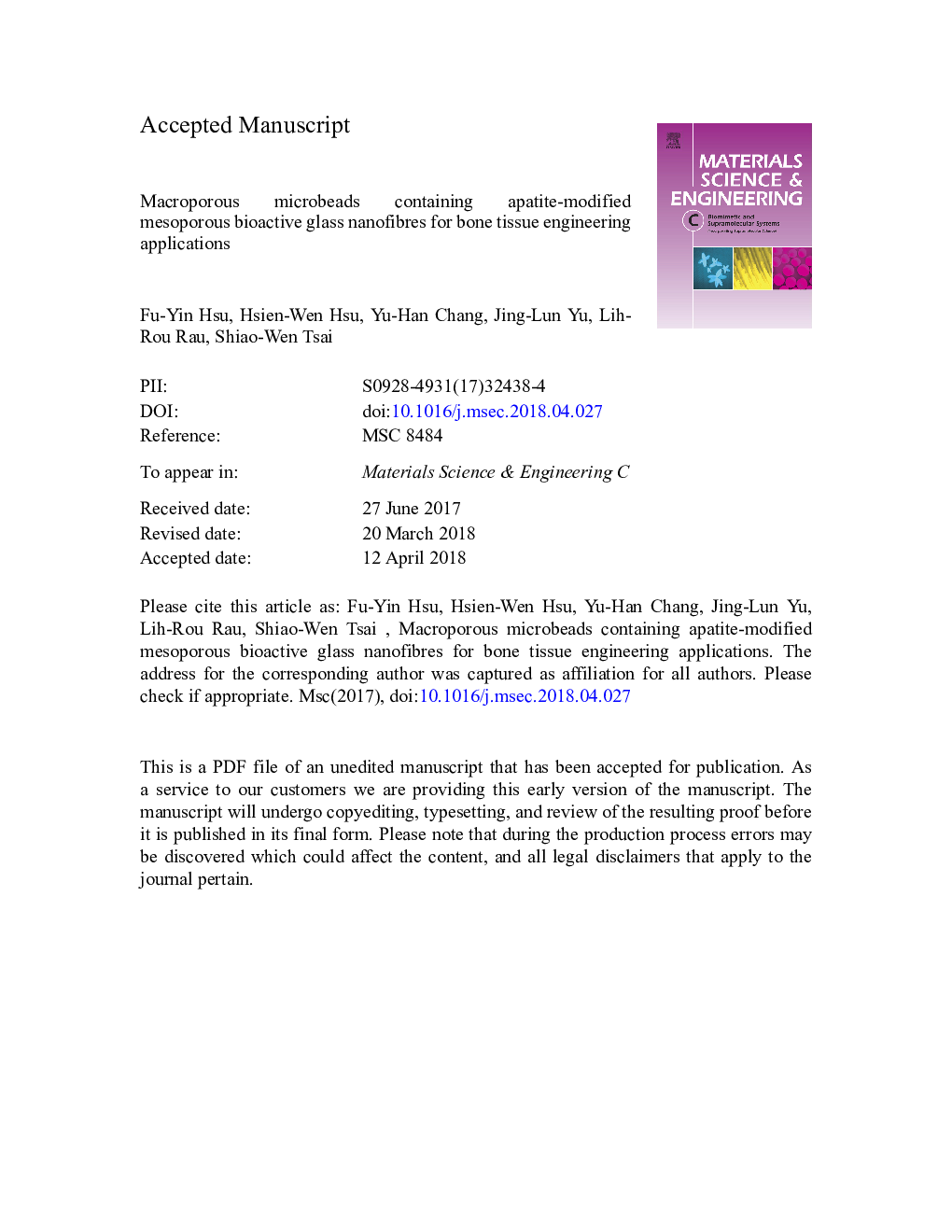| کد مقاله | کد نشریه | سال انتشار | مقاله انگلیسی | نسخه تمام متن |
|---|---|---|---|---|
| 7866495 | 1509132 | 2018 | 37 صفحه PDF | دانلود رایگان |
عنوان انگلیسی مقاله ISI
Macroporous microbeads containing apatite-modified mesoporous bioactive glass nanofibres for bone tissue engineering applications
ترجمه فارسی عنوان
میکروبائوپالهای مکرروپور که حاوی نانوفیبریزهای شیشه ای زیست فعال از جنس مایع آپاتیت برای برنامه های مهندسی بافت استخوانی هستند
دانلود مقاله + سفارش ترجمه
دانلود مقاله ISI انگلیسی
رایگان برای ایرانیان
کلمات کلیدی
موضوعات مرتبط
مهندسی و علوم پایه
مهندسی مواد
بیومتریال
چکیده انگلیسی
Mesoporous bioactive glass (MBG) has a greater surface area and pore volume than conventional BG. Hence, MBG is useful as a drug delivery carrier. Previously, MBG has been fabricated as dense or porous blocks. Compared to blocks, microbeads have a greater flexibility to fill different-shaped cavities with close packing. Moreover, fibrous materials have proven to increase cell attachment and differentiation because they mimic the three-dimensional structure of the natural extracellular matrix (ECM). Macroporous materials possess porous structures with interconnecting channels that allow the invasive growth of cells and capillaries. Hence, the aim of this study was to fabricate macroporous microbeads containing MBG nanofibres (MMBs). We used poly(methyl methacrylate) (PMMA) microspheres as the macroporous template in the process and removed the PMMA microspheres after the calcination treatment. Scanning electron microscopy imaging showed multiple pores on the surface of the MMBs, and a micro-computed tomography image showed the presence of pores throughout the entire microbead. The cellular attachment of MG63 osteoblast-like cells was considerably higher on the MMBs than on glass beads after culturing for 4â¯h. However, the cell viability greatly decreased after culturing for 1â¯day. We speculated that the release of a high concentration of calcium ions from the MMBs decreased the cell viability. To improve the cell viability, we modified the MMBs by immersing the MMBs in a simulated body fluid to fabricate a thin apatite layer on the surface of the MMBs. The apatite-modified MMBs (Ap-MMB) decreased the release of calcium ions and improved the cell viability. In an animal study, the bone defect in the control group did not recover. In contrast to the control group, the Ap-MMBs in the defect were nearly filled with new bone. The results show that the Ap-MMBs have great potential in osteogenesis for bone tissue engineering.
ناشر
Database: Elsevier - ScienceDirect (ساینس دایرکت)
Journal: Materials Science and Engineering: C - Volume 89, 1 August 2018, Pages 346-354
Journal: Materials Science and Engineering: C - Volume 89, 1 August 2018, Pages 346-354
نویسندگان
Fu-Yin Hsu, Hsien-Wen Hsu, Yu-Han Chang, Jing-Lun Yu, Lih-Rou Rau, Shiao-Wen Tsai,
